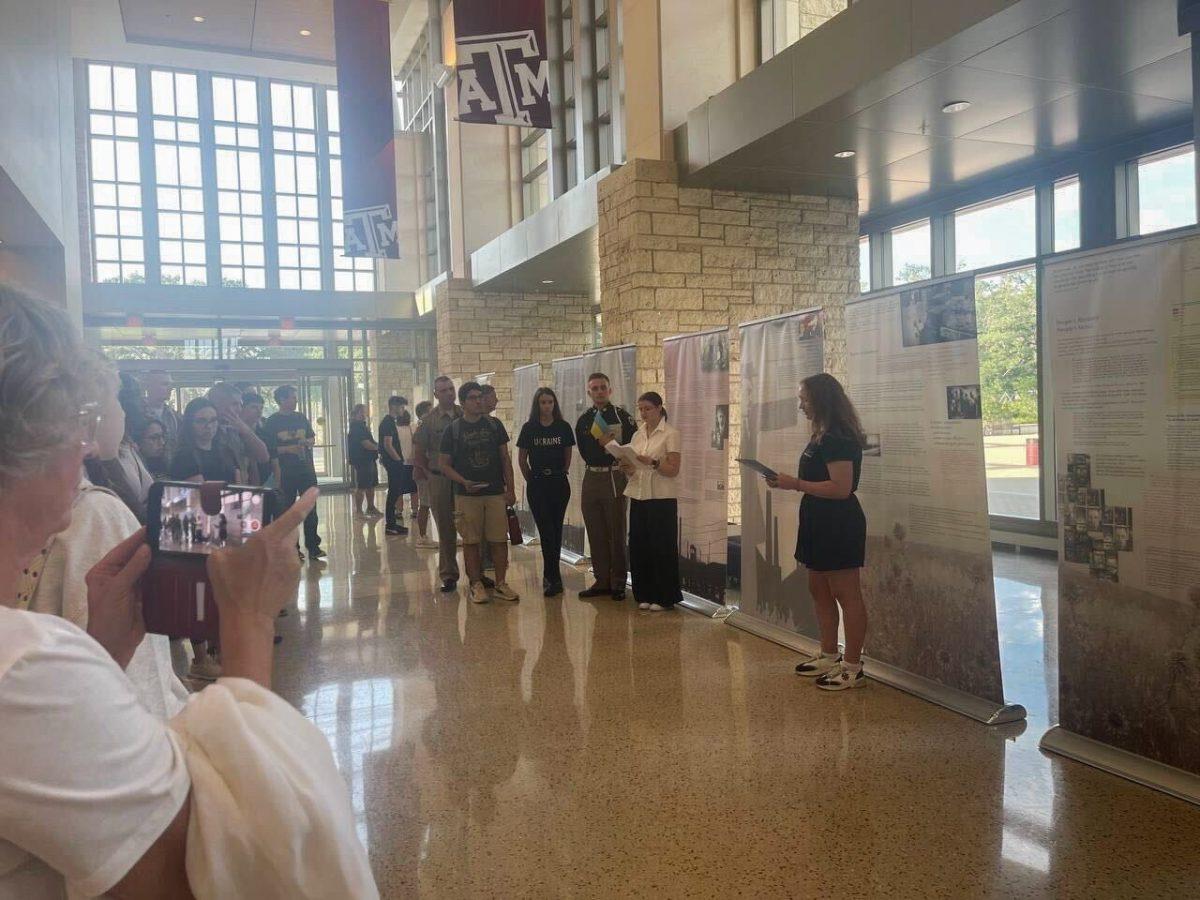Texas A&M’s Ukrainian Club held a one-week exhibition in the Memorial Student Center’s 12th Man Hall recognizing the genocide of the Ukrainian people. The exhibit concluded on Friday, Sept. 22.
The exhibition was open to the public, and those interested could learn more about Ukraine’s history and culture with guided tours. The event was sponsored by the Daar Foundation, which funds and supports Ukrainian relief programs and nonprofits. The Holodomor and Soviet Gulags were focal points of the exhibit and featured banners with in-depth information for visitors to read.
Economics sophomore Natalya Kolomiyets, vice president of the Ukrainian Club, said she hopes to shed light on genocide and make people aware of Ukraine’s history, connecting this to the current war Ukraine is facing.
“The Ukrainian Club’s mission is to spread awareness about Ukrainian history and just let people know what Ukraine is because, unfortunately, not everyone truly understands why this current war is happening right now,” Kolomiyets said. “They don’t really know the history that Russia was trying to control Ukraine for many years. If you read about this history once, it will always sit in your mind.”
Kolomiyets said she wants to utilize this exhibit to solidify Ukraine’s identity apart from Russia and show how far back Ukraine’s tensions with Russia go.
“People usually associate Ukraine with Russia as if Russia is the big brother or something,” Kolomiyets said. “It was never like that. We were always different. This brotherhood never existed. Right now, we’re trying to make this really big fence between us, and we’re not the same.”
Holodomor, also known as the Great Ukrainian Famine, is the first chapter of genocide in Ukraine’s history, taking place from 1932 to 1933. The famine was man-made and at the behest of Soviet leader Joseph Stalin. Ukrainians were forced to relinquish land and personal property to collectivized farms. Because of the forced collectivization of the agricultural industry, millions in rural, grain-growing regions were killed. This period is widely recognized as a period of genocide against the Ukrainian people.
The second tragedy featured was the Holocaust which is regarded as the deadliest genocide in human history. During this period, the Nazis killed 1.6 million people in the territory of Ukraine, more than a quarter of the 6 million Jewish people eliminated in Europe. Mass shootings and concentration camps were prevalent on Ukrainian soil.
The last major theme that was recognized was the Gulags, a system of forced labor camps that reached its peak during Stalin’s reign from the 1930s to the 1950s. These prisons involved brutal labor, harsh treatment and terrible conditions, resulting in millions of Ukrainian deaths. Those who would get imprisoned included citizens perceived as enemies, political dissidents and criminals.
Kolomiyets said the event succeeded in spreading awareness about Ukrainian history and acknowledged the support the Ukrainian Club and Ukraine as a nation have received.
“I feel like this exhibit made a difference, and [I] feel satisfied people are interested in learning about my country,” Kolomiyets said. “People would come up and ask about it, and people would stop by and read all the posters. I am really grateful that people came. I want people to know that us Ukrainians have gone and are going through suffering, so we are grateful for all the support.”





















